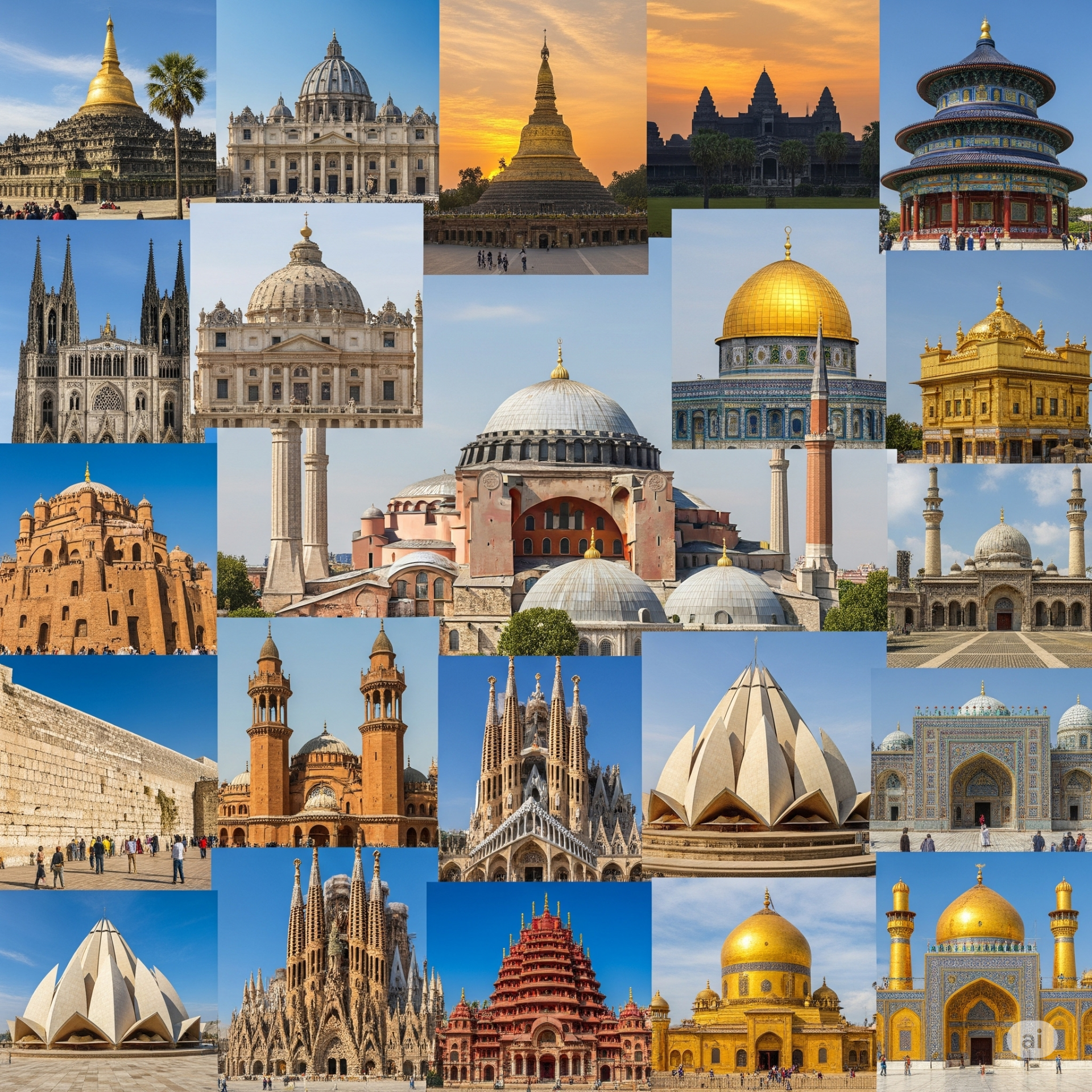The Grandeur of Faith: Exploring the Greatest Religious Buildings on Earth
Across continents and throughout millennia, humanity has expressed its deepest spiritual convictions through awe-inspiring architecture. Religious buildings are not merely places of worship; they are testaments to human ingenuity, cultural heritage, artistic brilliance, and unwavering faith. From towering cathedrals and intricate mosques to serene temples and ancient stupas, these structures stand as symbols of devotion, often reflecting the peak of their era’s engineering and artistic capabilities.
These magnificent edifices serve as sacred spaces, gathering points for communities, and living museums of history. They tell stories of empires, pilgrimages, artistic movements, and the enduring power of belief. Journey with us as we explore some of the greatest religious buildings that grace our planet, each a unique masterpiece echoing the spiritual aspirations of millions.

Here’s a look at some of the world’s most iconic religious structures:
| Building Name | Country | Religion |
| Hagia Sophia | Turkey | Christianity/Islam |
| St. Peter’s Basilica | Vatican City | Christianity |
| Mecca’s Grand Mosque (Masjid al-Haram) | Saudi Arabia | Islam |
| Angkor Wat | Cambodia | Hinduism/Buddhism |
| Borobudur Temple | Indonesia | Buddhism |
| Dome of the Rock | Jerusalem | Islam |
| Golden Temple (Harmandir Sahib) | India | Sikhism |
| Temple of Heaven | China | Taoism/Chinese Folk Religion |
| Chartres Cathedral | France | Christianity |
| Shwedagon Pagoda | Myanmar | Buddhism |
| Western Wall | Jerusalem | Judaism |
| Kashi Vishwanath Temple | India | Hinduism |
| Cologne Cathedral | Germany | Christianity |
| Imam Reza Holy Shrine | Iran | Islam |
| Lotus Temple | India | Baháʼí Faith |
| Great Mosque of Djenné | Mali | Islam |
| Sagrada Família | Spain | Christianity |
| Wat Arun | Thailand | Buddhism |
Each of these structures, regardless of its faith, embodies a profound connection between humanity and the divine. They inspire contemplation, reflect cultural identity, and remind us of the universal human quest for meaning and transcendence. Visiting these architectural marvels offers not just a glimpse into historical grandeur, but a deeper understanding of the diverse spiritual tapestry that weaves through our world.
Important religious sites and buildings
- For Catholicism:
- The Archbasilica of Saint John Lateran in Rome, Italy, considered the highest-ranking church in Catholicism.
- St. Peter’s Basilica in Vatican City, a prominent Renaissance church.
- La Sagrada Familia in Barcelona, Spain, known for its intricate design.
- Milan Cathedral, the third-largest cathedral globally.
- For Christianity (various denominations):
- The Church of the Holy Sepulchre in Jerusalem, Israel, associated with Jesus’ crucifixion and resurrection.
- Hagia Sophia in Istanbul, Turkey, significant for both Christianity and Islam.
- St. Basil’s Cathedral in Moscow, Russia, known for its vibrant architecture.
- For Islam:
- The Great Mosque of Mecca (Masjid al-Haram) in Saudi Arabia, Islam’s holiest site.
- The Dome of the Rock in Jerusalem, Israel, believed to be where Prophet Muhammad ascended to heaven.
- The Al-Aqsa Mosque, also in Jerusalem, considered the third holiest mosque in Islam.
- The Sheikh Zayed Grand Mosque in Abu Dhabi, UAE, the largest in the country.
- For Judaism:
- The Western Wall (Wailing Wall) in Jerusalem, Israel, a remnant of the ancient Jewish Temple.
- For Hinduism:
- Varanasi (Kashi), India: Considered one of the oldest cities in the world and the spiritual capital of India, with countless temples like Kashi Vishwanath Temple dedicated to Lord Shiva.
- Haridwar and Rishikesh, India: Known as the “Gateway to the Gods,” situated in the foothills of the Himalayas, where pilgrims bathe in the sacred Ganges. Neelkanth Mahadev Temple is a notable Shiva temple near Rishikesh.
- Tirupati, India: Home to the Tirumala Venkateswara Temple, one of the most visited temples globally, dedicated to an incarnation of Lord Vishnu.
- Rameswaram, India: An island town with the Ramanathaswamy Temple dedicated to Lord Shiva, famous for its architectural beauty and sacred wells.
- Ayodhya, India: The birthplace of Lord Rama, a revered deity in Hinduism.
- Ujjain, India: One of the seven sacred cities, home to the Mahakaleshwar Jyotirlinga.
- Dwarka, India: A sacred city associated with Lord Krishna.
- Badrinath, India: A significant pilgrimage in the Himalayas, part of the Char Dham pilgrimage.
- Kanchipuram, India: Known as the “City of Thousand Temples,” a major pilgrimage site for both Shaiva and Vaishnava devotees.
- Puri, India: Home to the Jagannath Temple, famous for its annual Rath Yatra.
- Angkor Wat in Cambodia: A large religious monument, originally a Hindu temple.
- Kashi Vishwanath Temple in Varanasi, India: A significant Shiva temple.
- Meenakshi Amman Temple in Madurai, India: Famous for its intricate sculptures.
- For Buddhism:
- The Mahabodhi Temple in Bodh Gaya, India, where the first Buddha attained enlightenment.
- The Shwedagon Pagoda in Myanmar, covered in gold.
- Borobudur Temple Compounds in Indonesia, known for intricate design and sacred geometry.
- For Sikhism:
- The Golden Temple (Harmandir Sahib) in Amritsar, India, the holiest Sikh Gurdwara.
- For Baháʼí Faith:
- The Shrine of Baháʼu’lláh in Acre, Israel, the most sacred site.
- The Lotus Temple in Delhi, India, known for its unique architecture and symbolism.
- For Shintoism:
- The Ise Grand Shrine in Ise, Japan, considered the most significant Shinto Shrine.
This list represents only a small selection of the immense variety of religious buildings found across the globe. Many of these sites hold immense historical, cultural, and spiritual importance for believers and continue to be visited by millions each year.
